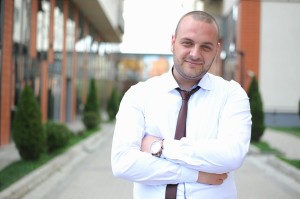Each month we look at case studies where chiropractic care has helped people with different health related problems. Some of them may seem obvious, while others may surprise you. Please pass this along to anyone who may be suffering from any of the following:
- Infertility
- Constipation
- Reduced Height
Infertility and Chiropractic
This is a case study of a 30-year-old woman diagnosed with:
- polycystic ovarian syndrome (PCOS)
- hypothyroidism
- ulcerative colitis
- an eight-year history of infertility
She initially sought chiropractic care for neck pain and ulcerative colitis. Her history revealed 3 prior motor vehicle accidents (MVA’s) – in childhood, while in high school and in 2006 to which she attributed her neck pain.
She was diagnosed with hypothyroidism in 2004 and with PCOS in 2005. Two years of medical fertility treatments consisting of metformin, spironolactone and clomifene failed to help. In 2008 she was diagnosed with ulcerative colitis for which she was taking medications.
Spinal analysis consisting of spinal heat readings, palpation and leg checks located her subluxations which were corrected with periodic chiropractic adjustments.
After five months of care she was ovulating again for the first time in eight years. She got pregnant after eight months of care. As of this writing she is the mother of a healthy two-year-old boy and has recently given birth to a baby girl. In addition, the patient reports no more neck pain, improved sleep and improvement of colitis symptoms. (1)
Constipation and bed wetting in a 10-year-old 
This is the case study of a 10-year-old girl who was brought to a chiropractic clinic for evaluation. The child had a history of four-day constipation and nocturnal enuresis (bed wetting).
Previous attempts to correct her constipation using probiotics, castor oil and flax seeds were unsuccessful.
Her parents brought her to their neighborhood chiropractor – improvement was seen within an hour of reducing cervical (neck) and ilium (hip) subluxations. On the third visit the mother revealed that a lifetime of bed wetting three to four times a week had ended after the first adjustment. (2)
Increase in height and chiropractic 
A 59-year-old man began chiropractic care after suffering from 20 years of low back pain, low energy and poor immune function.
Chiropractic examination revealed long-standing subluxations and degenerative joint disease. This was probably caused or compounded by numerous injuries over his life including a concussion that left him with amnesia for one day. Only acupuncture gave him temporary relief from his back pain.
Various chiropractic techniques were used to correct his vertebral subluxations. The patient showed improvement in all subjective and objective findings – relief from low back pain, improved energy and improved immune function. In addition, due to the increase in disc height throughout his spine, his overall height increased. (3)
Sources:
1.Metzger DK. Resolution of infertility in a patient with polycystic ovarian syndrome, hypothyroidism, and ulcerative colitis. Following subluxation-based chiropractic care: a case report and selective review of the literature. Journal of Pediatric, Maternal & Family Health – Chiropractic. 2016;3:68-74.
2.Shtulman I, Cunningham, MA. Resolution of constipation and nocturnal enuresis in a 10-year-old female following adjustment of vertebral subluxations: a case study. Journal of Pediatric, Maternal & Family Health – Chiropractic. 2016;2:61-67.
3.Syn G, Harper J, Fedorchuk C. Increase in disc height and autonomic functionin a 59-year-old male undergoing chiropractic care. Annals of Vertebral Subluxation Research. April 13, 2015:34-38.












